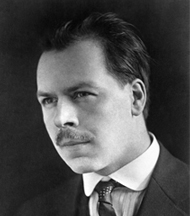Objectives and tasks of the Bureau, 1905-1920
By its 20th anniversary in 1914 the Bureau of Applied Botany had become a famous and respected institution in the sphere of crop diversity studies both in Russia and abroad and had its own specific objectives and methods. The Bureau's basic task was to study cultivated crops and useful, weedy or detrimental wild plants of the Russian Empire. Special research projects were conducted on the following agricultural crops: all cereals (wheat, barley, oat, rye, millet, Panicum Sorgfium, rice, etc.); industrial crops including fibre and oil-bearing plants and others; horticultural crops (cabbage, cucurbits and melons, legumes, root crops, tuber crops, medicinal and aromatic plants, and fruit-bearing plants); as well as wild plants, such as all weeds and pasture plants (grasses, sedges and legumes). This research was performed by applying scientifically precise methods including detailed studies of the scientific literature for the subject under investigation.
By 1914 the Bureau's collections had been greatly enlarged by accumulating the germplasm requested and shipped from various farms in Russia and by the collecting missions of the Bureau's researchers. In 1914 the major collection contained: wheat, 4100 accessions; barley, over 2900; oat, over 1000; rye, about 400; pasture grasses, about 500; sunflower, more than 450; weeds, over 1000; the carpological collection, more than 1000 seed samples, and other plants, over 2000 accessions. All in all, there were 14 000 accessions. The Bureau's herbarium contained more than 10000 specimens collected in different provinces of Russia.
At this time, the Bureau's basic priorities were to determine the composition of local varieties, their taxonomic names and geographic areas of distribution. The most important practical result of these activities was collecting, identification and description of the diversity of plant varieties cultivated in the Russian Empire, which helped to restore the diversity of cereal varieties and populations (in particular barley) that had been lost during devastating droughts in the Volga basin. All the above-mentioned crops were described in terms of the composition of local populations with respect to the races, forms and species present. The Bureau's study of most of these crops resulted in identifying the inherited morphological and agronomic characters, performing crosses and understanding the genetical basis of diversity of some of the crops along Mendelian lines. Complex examination of these collections led to the development of taxonomic systems in several major crops, generated from the data acquired by studying the heritabilitv of morphological, anatomical, cytological, biochemical, immunity and agronomical characters.
When World War I started the Bureau suffered a decline in its activities. Many Bureau workers joined the Army, the funding was reduced both in the Bureau's headquarters in Petrograd and in its provincial branches, but the Bureau continued its scientific research. Different aspects of various crops were studied at both the Bureau's branches and the central facility. The Bureau continued publishing the results of its research on different collections. For example, a paper by A. Maltzev entitled On the development of wild and weedy oats appeared in 1914, K.A. Flyaksberger's Identification of wheats and Wheat varieties in Siberia and N. Litvinov's On Puccinia glumarum incidence in spring wheats in Kamennaya Steppe in 1914 in the following year, A. Maltzev's Weeds in the governate of Novgorod and F. Satziperov's Tlie hybridization of Helianthus annus L. x H. agrophyllus A. Gray. in 1916, and R. Regel's On species formation and Vavilov 's On the origin of the cultivated rye in 1917.
In 1916 the Bureau of Applied Botany was renamed the Department of Applied Botany and Plant Breeding. At the end of 1917 Vavilov was recommended by R. Regel, K.A. Flyaksberger and A. Maltzev to be promoted to the position of Assistant Head of the Bureau. Vavilov attributed major importance to the activities of the Bureau and especially to Regel, Head and actual reorganizer of the institution. In one of his letters of 1924, Vavilov wrote:
In 1920, following Regel's death, N.I. Vavilov was elected Head of the Bureau of Applied Botany. Thus, 1920 marks the end of the first stage in the formation and development of the Department as an institution involved in collecting, studying and conserving plant resources.





